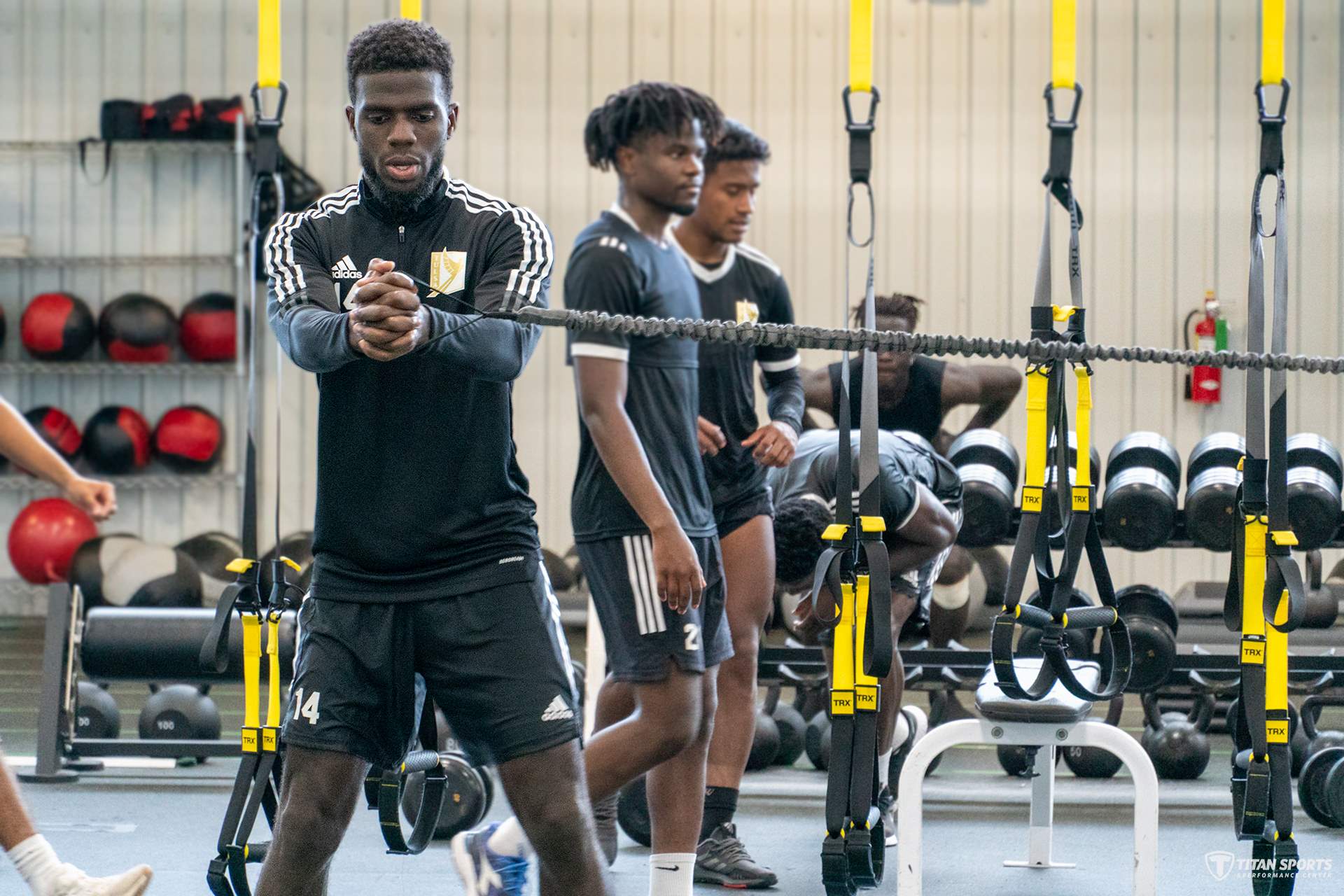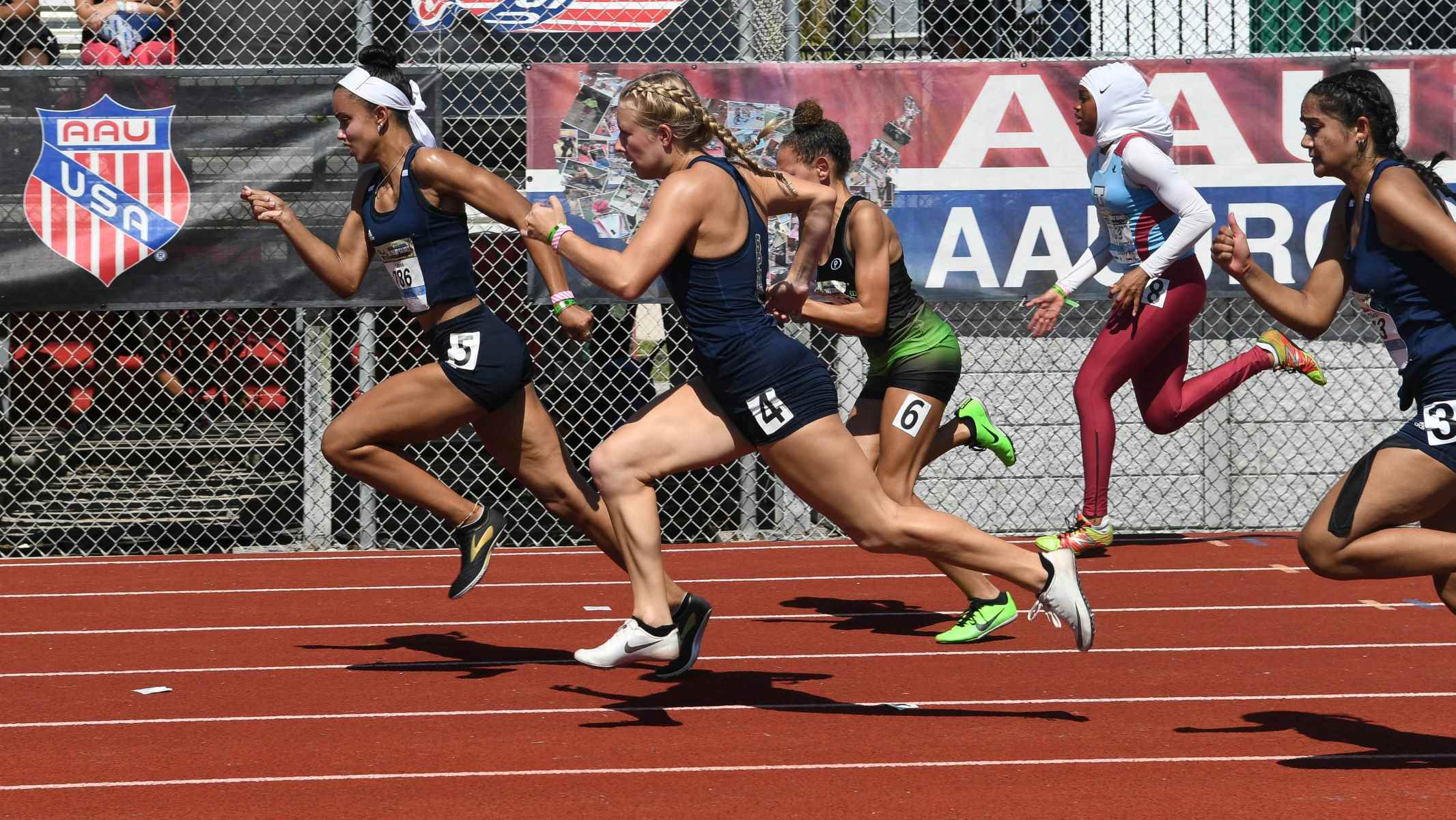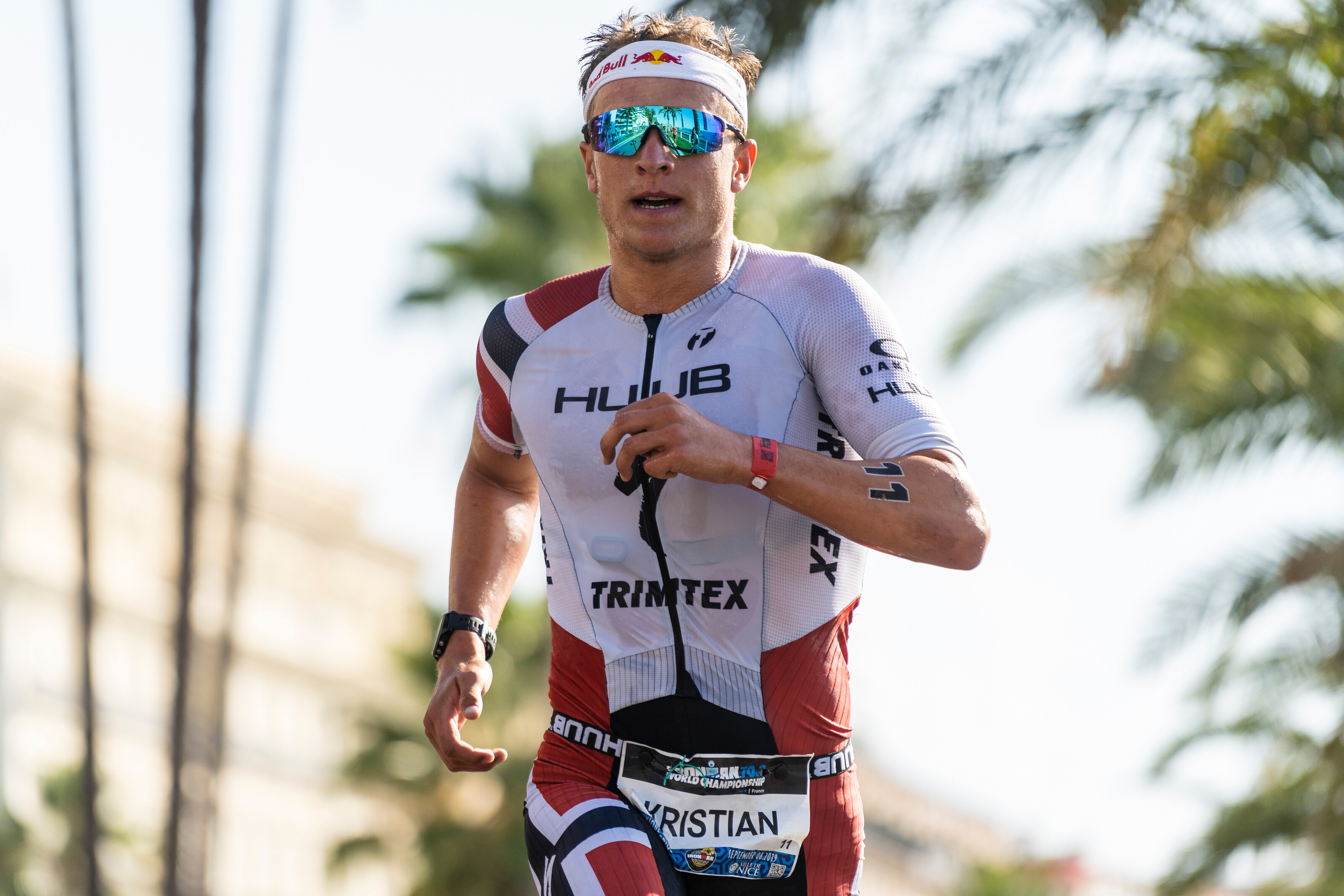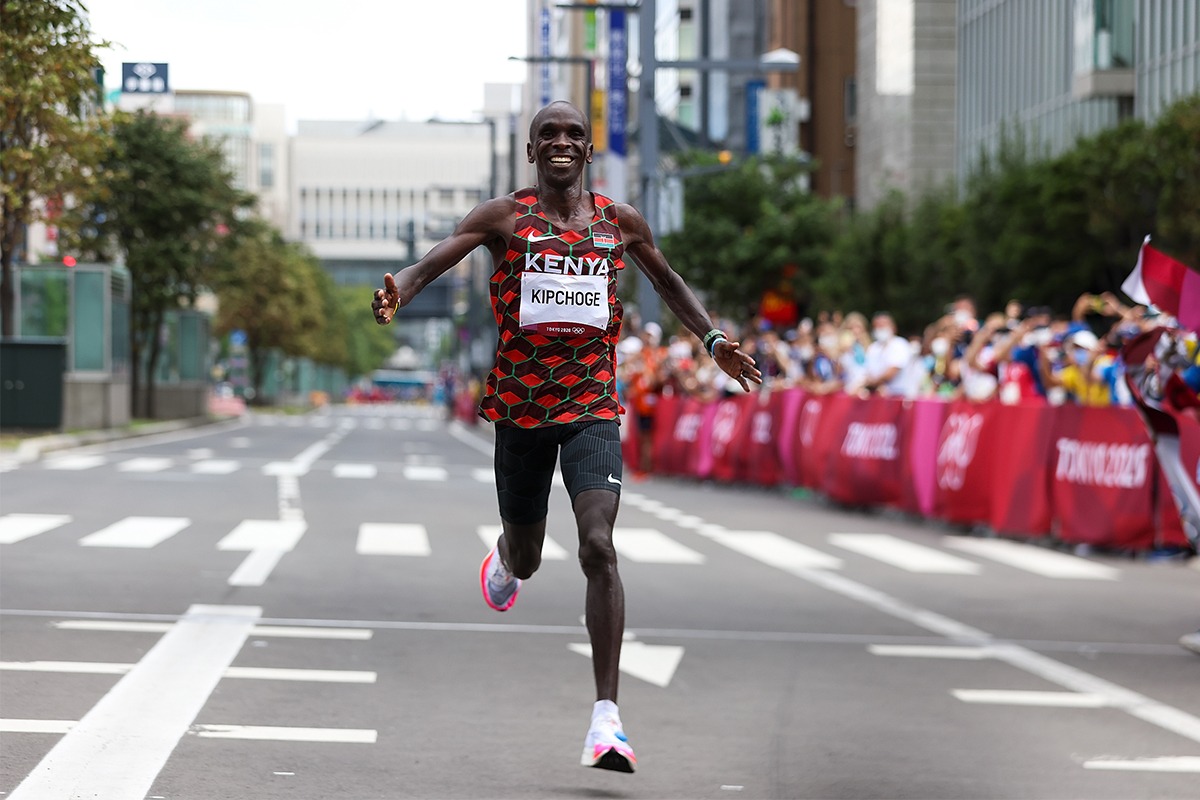

Featured
What Is Athletic Performance Training
Modified: March 1, 2024
Enhance your athletic performance with our featured training program. Experience optimal results and unlock your full potential on the field or court.
Introduction
Athletic performance training is a specialized training approach designed to enhance an individual’s physical capabilities, optimize their athletic potential, and improve their overall performance in a specific sport or physical activity. It focuses on developing specific physical traits, improving skills, and honing mental fortitude to achieve peak performance levels.
Athletes across various sports have recognized the value of incorporating performance training into their training regimen. It is no longer sufficient to solely rely on talent and natural ability; athletes need to be proactive in seeking ways to gain a competitive edge. This is where athletic performance training comes into play.
By targeting specific aspects such as strength, speed, endurance, agility, flexibility, and coordination, athletic performance training aims to enhance an athlete’s overall athletic ability, reduce the risk of injury, and improve their performance during training and competition.
In this article, we will delve into the world of athletic performance training, understanding its core components, benefits, and how it can be integrated into training programs across various sports.
Whether you are a professional athlete striving for greatness, a competitive amateur looking to improve your skills, or simply someone seeking to enhance your overall physical fitness, this article will serve as a comprehensive guide to understanding and implementing athletic performance training.
Definition of Athletic Performance Training
Athletic performance training, also known as sports performance training, is a specialized form of training that focuses on optimizing an athlete’s physical capabilities to improve their overall athletic performance. It involves a systematic and targeted approach to training, incorporating various exercises, techniques, and methodologies to enhance specific athletic abilities such as strength, speed, power, endurance, agility, and flexibility.
This type of training is not limited to professional athletes; it is also beneficial for amateur athletes, recreational sports enthusiasts, and individuals looking to improve their fitness levels. Athletic performance training strives to maximize an individual’s physical potential and prepare them to perform at their best in their respective sport or physical activity.
Unlike general fitness training, which aims to improve overall health and fitness, athletic performance training is sport-specific and tailored to the demands of a particular sport or activity. It takes into account the unique physical and physiological requirements of the sport and designs training programs accordingly.
Athletic performance training typically involves a combination of strength training, speed and agility drills, plyometrics, cardiovascular conditioning, flexibility exercises, and sport-specific skill development. These components are carefully integrated into a cohesive and progressive training plan to enhance an athlete’s performance in a comprehensive manner.
Moreover, athletic performance training encompasses more than just physical conditioning. It also addresses mental aspects such as focus, concentration, confidence, and mental resilience. Training programs often include specialized mental conditioning exercises and strategies to support an athlete’s mental well-being and develop a winning mindset.
Overall, athletic performance training aims to optimize an athlete’s physical capabilities, improve their technical skills, boost their mental fortitude, and reduce the risk of injuries. It plays a crucial role in helping athletes reach their full potential and achieve peak performance levels in their chosen sport or physical activity.
Importance of Athletic Performance Training
Athletic performance training is of utmost importance for athletes and individuals seeking to excel in their respective sports or physical activities. Here are key reasons why athletic performance training is crucial:
- Enhanced Physical Abilities: Athletic performance training focuses on developing and maximizing specific physical traits, such as strength, speed, power, endurance, agility, and flexibility. By targeting these areas, athletes can improve their performance in their sport or activity, allowing them to outperform their opponents and reach new levels of achievement.
- Injury Prevention: Through proper training techniques and exercises, athletic performance training helps reduce the risk of sports-related injuries. It emphasizes strength and conditioning exercises that strengthen muscles, tendons, and ligaments, making them more resilient. This can help athletes avoid common injuries and stay healthy and active in their sport.
- Improved Technique and Skill Development: Athletic performance training includes sport-specific skill development exercises that help athletes refine their techniques and improve their overall skill set. By focusing on the fundamentals and mastering the technical aspects of their sport, athletes can enhance their performance and execute their moves with precision and efficiency.
- Increased Mental Toughness: Athletic performance training not only strengthens the body but also hones the mind. It challenges athletes to push their limits and overcome mental barriers. Through mental conditioning exercises, athletes learn to stay focused, maintain concentration, build confidence, and develop resilience in the face of adversity. This mental toughness can make a significant difference in high-pressure competitive situations.
- Longevity in Sport: Regular athletic performance training helps athletes maintain their overall health and fitness, which is essential for long-term participation in their sport. It can improve endurance, flexibility, and joint stability, minimizing the risk of overuse injuries and promoting longevity in an athlete’s career.
- Competitive Edge: In today’s highly competitive sports landscape, athletes need every advantage they can get. Athletic performance training provides that edge by helping athletes develop their physical abilities, technique, and mental fortitude. This allows them to surpass their competitors and perform at their best, ultimately increasing their chances of success.
Overall, athletic performance training is essential for athletes who want to take their performance to the next level. It combines physical conditioning, technical skill development, and mental preparation to create well-rounded athletes who can excel in their chosen sport or physical activity.
Components of Athletic Performance Training
Athletic performance training incorporates various components that work together to enhance an athlete’s physical abilities and improve their overall performance. These components include:
- Strength Training: This component focuses on increasing muscular strength and power. It typically involves resistance exercises such as weightlifting, bodyweight exercises, and functional movements to strengthen the muscles and improve overall body mechanics.
- Speed and Agility Training: Speed and agility training aim to improve an athlete’s ability to move quickly and change direction efficiently. It includes drills, sprints, ladder exercises, and reaction drills to enhance speed, acceleration, deceleration, and agility.
- Endurance Training: Endurance training focuses on developing an athlete’s cardiovascular fitness and muscular endurance. It includes activities such as long-distance running, cycling, swimming, and interval training to improve an athlete’s ability to sustain effort over extended periods.
- Flexibility and Mobility Training: Flexibility and mobility training aims to improve an athlete’s range of motion and joint flexibility. It includes stretching exercises, yoga, mobility drills, and dynamic warm-ups to enhance flexibility and reduce the risk of injuries.
- Plyometric Training: Plyometric training involves explosive, high-intensity exercises that improve an athlete’s power and explosive strength. It includes exercises such as box jumps, medicine ball throws, and depth jumps, which enhance the stretch-shortening cycle and improve an athlete’s ability to generate force quickly.
- Core Stability Training: Core stability training targets the muscles of the abdomen, lower back, and pelvis, commonly referred to as the core. It aims to improve stability, balance, and coordination, which are vital for generating power, maintaining body control, and preventing injuries.
- Sport-Specific Skill Training: This component focuses on honing the specific technical skills required for the athlete’s sport. It includes drills and exercises that simulate game-like situations, allowing athletes to improve their sport-specific skills, such as shooting, passing, dribbling, or hitting.
- Rest and Recovery: Rest and recovery are essential components of athletic performance training. Adequate rest allows the body to repair and rebuild, reducing the risk of overtraining and injuries. Recovery techniques such as foam rolling, stretching, massage, and proper nutrition are also crucial for optimizing performance and promoting overall well-being.
These components work synergistically to improve an athlete’s overall physical capabilities, prevent injuries, and optimize their performance in their chosen sport or physical activity.
Types of Athletic Performance Training
Athletic performance training can be categorized into different types based on the specific goals and focus areas of the training. Here are some common types of athletic performance training:
- Strength Training: This type of training focuses on improving an athlete’s muscular strength and power. It typically involves resistance exercises such as weightlifting, bodyweight exercises, and functional movements. The primary goal is to increase overall strength, enhance explosive power, and improve muscle endurance.
- Speed and Agility Training: Speed and agility training aims to improve an athlete’s speed, acceleration, deceleration, and quickness. It includes drills, sprints, ladder exercises, and cone drills to enhance an athlete’s speed and agility, allowing for rapid changes in direction and quick responsiveness on the field or court.
- Plyometric Training: Plyometric training focuses on enhancing an athlete’s power and explosiveness. It involves explosive, high-intensity exercises that involve jumping, bounding, and quick movements. Plyometric exercises improve the stretch-shortening cycle, which enhances an athlete’s ability to generate force rapidly.
- Cardiovascular Conditioning: Cardiovascular conditioning is crucial for improving an athlete’s endurance and aerobic fitness. It involves activities such as running, cycling, swimming, and interval training to improve an athlete’s cardiovascular health, increase lung capacity, and enhance their ability to sustain effort over extended periods.
- Flexibility and Mobility Training: Flexibility and mobility training aim to improve an athlete’s range of motion and joint flexibility. It includes stretching exercises, yoga, and mobility drills that help improve muscle flexibility, reduce muscle imbalances, and enhance overall movement efficiency.
- Sport-Specific Skill Training: This type of training focuses on improving the specific technical skills required for the athlete’s sport. It includes drills, practice sessions, and game simulations that help athletes refine their sport-specific skills, such as shooting, passing, dribbling, or hitting.
- Recovery and Regeneration: Recovery and regeneration training is crucial for optimizing performance and preventing injuries. It involves techniques such as foam rolling, stretching, massage, and proper nutrition to aid in the recovery and repair of muscles, reduce muscle soreness, and promote overall well-being.
These types of athletic performance training can be combined and tailored to meet an athlete’s specific needs based on their sport, position, and individual goals. A comprehensive training program often incorporates a combination of these types to target multiple aspects of athletic performance, resulting in well-rounded and highly capable athletes.
Benefits of Athletic Performance Training
Athletic performance training offers numerous benefits for athletes and individuals striving to improve their physical capabilities and excel in their chosen sport or physical activity. Here are some key benefits of athletic performance training:
- Enhanced Performance: Athletic performance training focuses on improving specific physical attributes such as strength, speed, power, endurance, agility, and flexibility. By enhancing these key areas, athletes can experience significant improvements in their overall performance, enabling them to achieve higher levels of success in their sport or activity.
- Injury Prevention: Engaging in proper athletic performance training can help reduce the risk of injuries. By addressing muscular imbalances, enhancing joint stability, and improving overall body mechanics, athletes can minimize the likelihood of common sports-related injuries and maintain optimal physical health.
- Improved Physical Abilities: Regular training targeting strength, speed, power, endurance, and agility can lead to significant improvements in an athlete’s physical abilities. Athletes can experience increased power and explosiveness, improved speed and quickness, enhanced stamina, and better overall movement efficiency.
- Mental Toughness: Athletic performance training not only strengthens the body but also builds mental toughness. Through challenging training sessions, athletes develop mental resilience, focus, concentration, and confidence. This mental fortitude can have a profound impact on an athlete’s performance in high-pressure situations.
- Sport-Specific Skill Development: Athletic performance training includes sport-specific skill development exercises, allowing athletes to refine their technique and improve their overall skill set. This can lead to improved accuracy, precision, and proficiency in executing sport-specific moves and maneuvers.
- Increased Confidence: As athletes witness improvements in their physical abilities and see their performance levels rise, their confidence gets a significant boost. This increased self-belief can translate into a more positive mindset, better performance, and the ability to overcome challenges on and off the field.
- Better Overall Health: Engaging in athletic performance training promotes overall health and well-being. It improves cardiovascular health, increases bone density, reduces the risk of chronic diseases, enhances mental well-being, and boosts overall fitness levels.
- Competitive Advantage: By dedicating themselves to athletic performance training, athletes gain a competitive advantage over their opponents. The improved physical abilities, enhanced skills, and mental toughness acquired through training provide athletes with the edge they need to outperform their competition and achieve success in their sport.
Athletic performance training is not limited to professional athletes; it benefits individuals of all ages and skill levels looking to improve their fitness, excel in recreational sports, or lead an active lifestyle. The comprehensive approach of athletic performance training addresses various aspects of physical and mental development, helping individuals unlock their full potential and experience significant improvements in their athletic performance.
Common Myths about Athletic Performance Training
Athletic performance training is often surrounded by various myths and misconceptions. Here, we debunk some common myths to provide a clear understanding of the realities of athletic performance training:
- Myth 1: Athletic performance training is only for elite athletes. Reality: Athletic performance training is beneficial for athletes of all levels, including amateurs and recreational sports enthusiasts. It can enhance performance, reduce the risk of injuries, and improve overall fitness for individuals participating in any physical activity.
- Myth 2: Strength training will make you bulky and slow. Reality: Strength training does not automatically lead to bulky muscles and reduced speed. Properly designed training programs target specific muscle groups, improve muscle fiber recruitment, and enhance power and speed without adding excessive mass.
- Myth 3: Women should avoid strength training because it will make them look masculine. Reality: Strength training offers numerous benefits for women, including improved body composition, increased bone density, enhanced athletic performance, and a toned physique. It does not lead to excessive muscle growth or a masculine appearance unless specifically trained for that purpose.
- Myth 4: Young athletes should not strength train because it can stunt their growth. Reality: When performed with proper technique and supervision, strength training is safe for young athletes and can actually promote healthy growth and development. Strength training can improve muscular strength, enhance coordination, and reduce the risk of injuries in young athletes.
- Myth 5: Athletic performance training requires expensive equipment or facilities. Reality: While access to specialized equipment and facilities can be beneficial, athletic performance training can be done with minimal equipment and in various settings. Bodyweight exercises, resistance bands, free weights, and simple tools can be used effectively to improve strength, power, speed, and agility.
- Myth 6: More training is always better. Reality: Proper recovery and rest are critical for optimizing performance. Overtraining can lead to physical and mental burnout, increased risk of injuries, and decreased performance. Balance between training, rest, and recovery is necessary for sustainable progress.
- Myth 7: Athletic performance training is only focused on physical aspects. Reality: Athletic performance training includes mental conditioning, skill development, and injury prevention. It encompasses a holistic approach to training, addressing both physical and mental aspects to improve overall performance and well-being.
- Myth 8: Once you reach a certain level, further improvements are not possible. Reality: Every athlete has the potential for improvement, regardless of their current performance level. Through consistent training, proper coaching, and a growth mindset, athletes can continue to make progress and achieve new milestones in their athletic performance.
By dispelling these myths, it becomes clear that athletic performance training is a valuable tool for athletes and individuals aiming to enhance their performance and overall fitness. It is essential to approach training with accurate information and a clear understanding of the benefits it offers.
Integrating Athletic Performance Training into Training Programs
Integrating athletic performance training into training programs requires a thoughtful and systematic approach to ensure maximum effectiveness. Here are some key considerations for successfully incorporating athletic performance training:
- Assess Individual Needs: Begin by assessing the specific needs and goals of the athlete or individual. This can include identifying areas for improvement, understanding the physical demands of their sport or activity, and evaluating any existing injuries or limitations. Tailor the training program accordingly to address individual needs.
- Design a Comprehensive Program: Create a well-rounded training program that includes various components of athletic performance training such as strength training, speed and agility drills, endurance conditioning, flexibility exercises, and skill development. Ensure the program provides a balanced focus on all key areas and progresses in intensity over time.
- Periodization: Implement a periodization plan to structure the training program effectively. Periodization involves dividing the training program into specific phases, each with a different focus and intensity level. This approach helps prevent overtraining, optimize performance, and ensure peak readiness for competitions or events.
- Proper Technique and Form: Emphasize proper technique and form during training to maximize effectiveness and reduce the risk of injuries. Ensure athletes receive proper coaching and instruction to perform exercises correctly. This includes gradually increasing training loads, monitoring form, and adjusting technique as needed to maintain optimal performance.
- Monitor Progress and Adjust: Regularly monitor progress and make necessary adjustments to the training program. Reassess strengths, weaknesses, and performance improvements over time. Adjust the program accordingly to target specific areas that need attention or to accommodate changes in season, competition schedules, or individual circumstances.
- Recovery and Regeneration: Prioritize rest and recovery as part of the training program. This allows the body to repair and adapt to the training stimulus, reducing the risk of overtraining and promoting optimal performance. Incorporate recovery techniques such as foam rolling, stretching, and adequate sleep, along with proper nutrition, to support the body’s recovery process.
- Mental Conditioning: Mental conditioning is a vital aspect of athletic performance. Incorporate strategies such as visualization, goal setting, positive self-talk, and mindfulness to develop mental toughness and resilience. Utilize techniques to improve focus, concentration, and confidence during training and competition.
- Continual Evaluation: Regularly evaluate the effectiveness of the training program and make adjustments as needed. Keep up with the latest research and training methods to stay current and ensure the program aligns with current best practices. Seek feedback from athletes or individuals to gather insights on their experience and progress.
Integrating athletic performance training into training programs requires a well-planned and customized approach. By considering individual needs, designing a comprehensive program, and implementing proper technique, athletes and individuals can maximize the benefits of athletic performance training and achieve their performance goals.
Conclusion
Athletic performance training plays a pivotal role in helping athletes and individuals excel in their chosen sports or physical activities. By targeting specific physical attributes, improving skills, and developing mental fortitude, athletic performance training enhances overall performance and reduces the risk of injuries.
In this article, we explored the definition of athletic performance training and its components, including strength training, speed and agility training, endurance conditioning, flexibility exercises, and sport-specific skill development. We also debunked common myths surrounding athletic performance training, highlighting the importance of proper technique, individualized approach, and the holistic nature of training.
It is essential to understand that athletic performance training is not limited to elite athletes. It benefits individuals of all levels, from amateurs to recreational enthusiasts, by improving their physical abilities, enhancing performance, and promoting overall well-being.
By integrating athletic performance training into training programs and considering factors such as individual needs, periodization, technique, recovery, and mental conditioning, athletes and individuals can optimize performance and reach their full potential. Continual evaluation and adjustment of the training program ensure its effectiveness and alignment with current best practices.
Whether you are a competitive athlete seeking to reach the next level or an individual interested in improving your fitness and performance, athletic performance training offers a pathway to success. Embrace the opportunities it provides and unlock your potential as you strive for excellence in your athletic pursuits.









